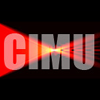|
Jeff Thiel Research Scientist/Engineer II jthiel@apl.uw.edu Phone 206-221-4731 |
Department Affiliation
 |
Center for Industrial & Medical Ultrasound |
Education
B.S. Diagnostic Medical Ultrasound, Seattle University, 1992
Videos
|
Ultrasonic Propulsion of Residual Kidney Stone Fragments Ultrasonic propulsion, an investigational kidney stone treatment for awake un-anesthetized patients, sweeps stone fragments toward the ureter to facilitate their natural passage through the urine. |
More Info |
9 Sep 2024
|
|||||||
|
Ultrasonic propulsion, an investigational kidney stone treatment for awake un-anesthetized patients, sweeps stone fragments toward the ureter to facilitate their natural passage through the urine. |
|||||||||
|
Publications |
2000-present and while at APL-UW |
Facilitated clearance of small, asymptomatic renal stones with burst wave lithotripsy and ultrasonic propulsion Harper, J.D., and 18 others including B. Dunmire, J. Thiel, Y.-N. Wang, S. Totten, J.C. Kucewicz, and M.R. Bailey, "Facilitated clearance of small, asymptomatic renal stones with burst wave lithotripsy and ultrasonic propulsion," J. Urol., 214, 41-47, doi:10.1097/JU.0000000000004533, 2025. |
More Info |
1 Jul 2025 |
|||||||
|
We tested feasibility of burst wave lithotripsy (BWL) and ultrasonic propulsion to noninvasively fragment and expel small, asymptomatic renal stones in awake participants. |
|||||||||
Advancing boiling histotripsy dose in ex vivo and in vivo renal tissues via quantitative histological analysis and shear wave elastography Ponomarchuk, E., G. Thomas, M. Song, Y.-N. Wang, S. Totten, G. Schade, J. Thiel, M. Bruce, V. Khokhlova, and T. Khokhlova, "Advancing boiling histotripsy dose in ex vivo and in vivo renal tissues via quantitative histological analysis and shear wave elastography," Ultrasound Med. Biol., 50, 1936-1944, doi:10.1016/j.ultrasmedbio.2024.08.022, 2024. |
More Info |
1 Dec 2024 |
|||||||
|
Objective |
|||||||||
Randomized controlled trial of ultrasonic propulsion-facilitated clearance of residual kidney stone fragments vs. observation Sorensen, M.D., and 16 others including B. Dunmire, J. Thiel, B.W. Cunitz, J.C. Kucewicz, and M.R. Bailey, "Randomized controlled trial of ultrasonic propulsion-facilitated clearance of residual kidney stone fragments vs. observation," J. Urol., 212, 811-820, doi:10.1097/JU.0000000000004186, 2024. |
More Info |
1 Dec 2024 |
|||||||
|
Ultrasonic propulsion is an investigational procedure for awake patients. Our purpose was to evaluate whether ultrasonic propulsion to facilitate residual kidney stone fragment clearance reduced relapse. |
|||||||||
In The News
|
Pushing kidney stone fragments reduces stones' recurrence UW Medicine News Using ultrasound to reposition the smaller grains significantly lowers patients’ returns to the operating room, a study finds. |
12 Sep 2024
|




